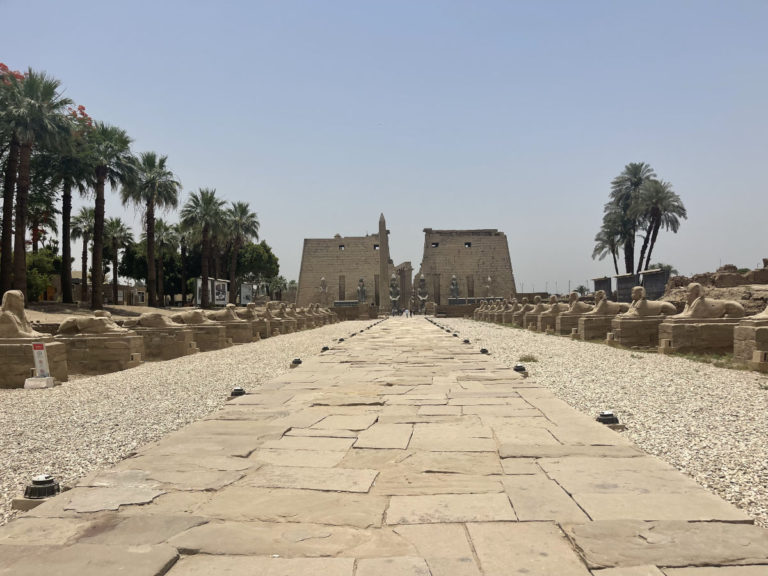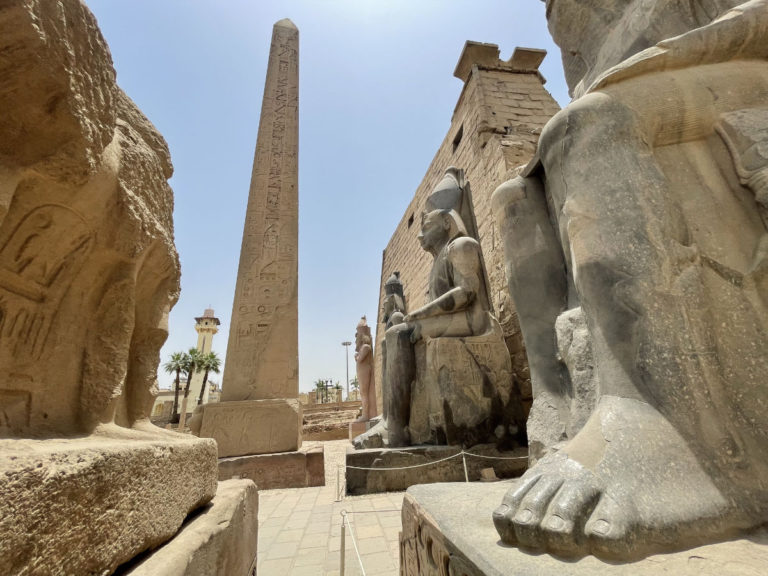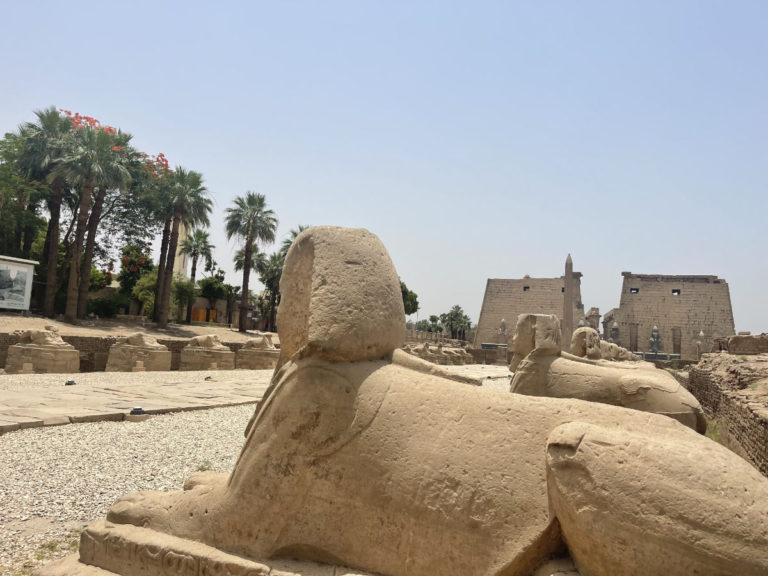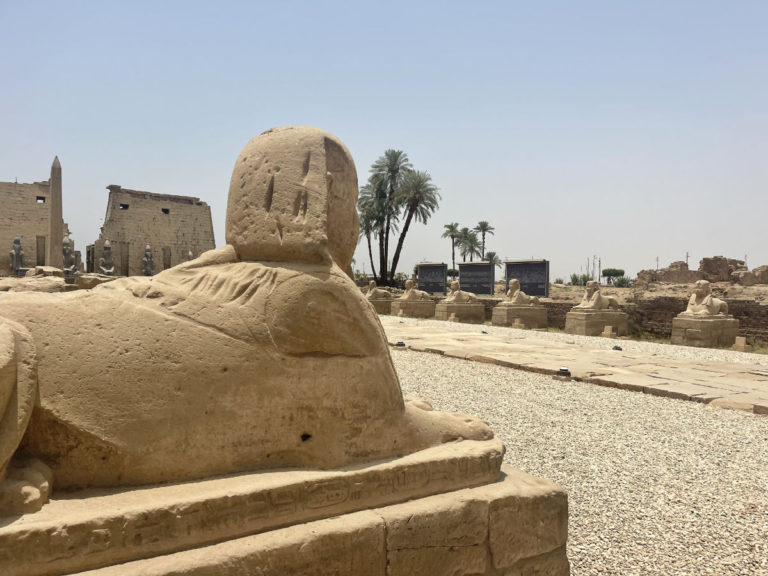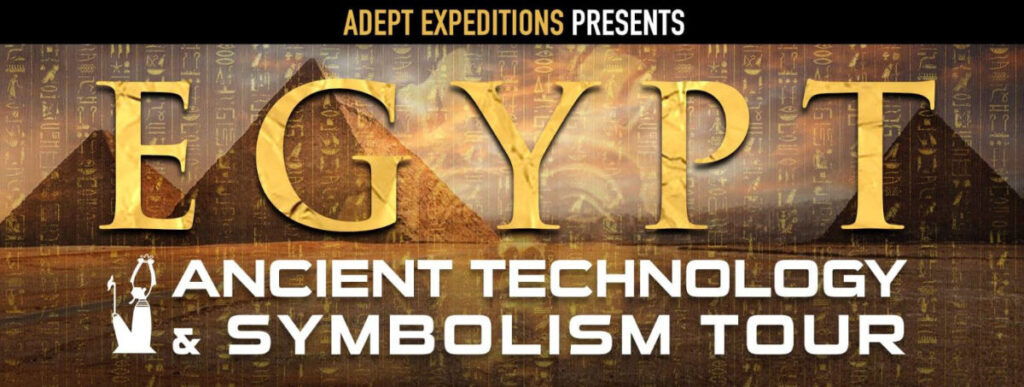
The most Complete Guide for visiting Luxor Temple

Luxor Temple
Located in the heart of ancient Thebes, Luxor Temple was essentially built under the Egyptian 18th and 19th dynasties. It was consecrated to the god Amun under his two aspects of Amun-Ra (Ra, was considered the god of the sky, god of the Sun and of the origin of life in Egyptian mythology). The oldest parts currently visible date back to Amenhotep III and Ramses II. Later, new elements were added by Shabako, Nectanebo I, and the Ptolemaic dynasty. In Roman times, the temple was partially transformed into a military camp.
The building, one of the best preserved from the New Egyptian Empire, still maintains numerous structures. In addition to the great pylon, the visitor can also cross two large peristyles and the monumental colonnade that links these two courtyards.
This enclosure was conceived as a complement to the other great temple of the city of Karnak. Its construction was promoted mainly by the pharaohs Amenhothep III and Ramses II. The latter finished it as it is known today.
Interesting Facts
- The Luxor Temple is part of the group known as Ancient Thebes with its necropolis, declared a World Heritage Site by UNESCO in 1979.
- It’s one of the best preserved temples of ancient Egypt and to visit it is to enter the fascinating world of the gods, where only the high priests and, of course, the pharaoh could access.
- After crossing the pylon, to the left is the back of a mosque that was built in the 13th century on the ruins of the Luxor temple. Although it has nothing to do with ancient Egypt. In fact, the mosque's presence has prevented the Luxor temple from being excavated completely.
- The function of the Egyptian temples was to provide an earthly dwelling for the gods, that is, a stone construction that housed their statue.
Monday – Sunday 7:00 am to 8:00 pm
FOREIGNERS:
Adult: EGP 180
Student: EGP 90
EGYPTIANS/ARABS:
Adult: EGP 30
Student: EGP 10
In the morning to avoid crowds of tourists and avoid the heat, it’s also convenient to visit it after 6:00 pm as it is one of the few temples that allow access at night.
The estimated tour time is approximately 1 hour and a half.
Luxor Temple video
(17:04 minutes)

Learn about Egypt and Luxor the Valey of the Kings Karnak Ramesseum the list goes on...
You shouldn't miss...
The Valley of the Kings
The Valley of the Kings
Karnak
Medinet Habu
More about Luxor
An avenue between two temples
Although the access to the visitors is located elsewhere, the visit to Luxor begins in front of the only pylon of this temple. But before crossing this gateway, you should look back and walk along the avenue of the sphinxes, or rather what remains of it. This avenue, interrupted by the road today, had a length of almost 3 km, a width of about 70 m, and linked the two most important temples of ancient Thebes: Luxor and Karnak. In its day it was flanked by 1,400 sphinxes, half man, half lion, and 650 were recovered in excavations.
A Roman chapel
However, in this final part of the route, perhaps the least striking, there is an atypical element, which is not repeated in any other temple: a Roman sanctuary dedicated to the imperial cult, with paintings of Roman emperors superimposed on the figures of the pharaohs In the 3rd century AD, the temple compound was fortified and converted into a Roman fort until it fell into oblivion.
Obelisks in Luxor
Right outside the enclosure, there’s a huge 25-meter obelisk that symbolizes a petrified sunbeam. Originally, it was accompanied by another obelisk that was donated to France in 1831 and can now be seen in the Place de la Concorde in Paris.
The seated colossi
Another impressive detail is the two seated colossi that flank the entrance and represent Pharaoh Ramses II. The pylons were like an access door to the world of the gods and also a “safety lock” that prevented chaos from penetrating the divine world.
Download Luxor's Travel Guide from here:

Available on Apple Books, Kindle and Google Play Books.

